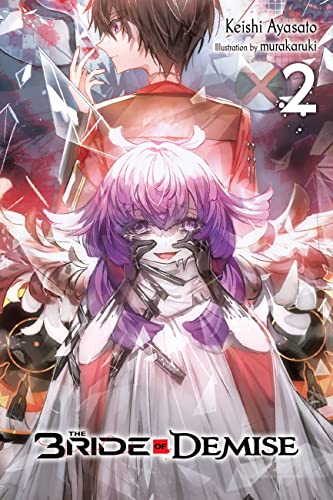By Keishi Ayasato and murakaruki. Released in Japan as “Shūen no Hanayome” by MF Bunko J. Released in North America by Yen On. Translated by Jordan Taylor.
Sometimes you are an author with a wonderful idea, a grand epic tale that will span 30, nay, 50 volumes, and then you get told by editorial to wrap it up in the next chapter. So goes life. Then there is the opposite problem. Sometimes you get an idea for a great, short, punchy horror story with a side of friendship and bonding, and it’s great. In fact, it’s so great the publisher asks where the next volume is. There… isn’t one? It’s complete? Nonsense, you will write more. Because it was popular. Now, I’m not sure that’s exactly what happened with Keishi Ayasato and The Bride of Demise, but it would not surprise me if that was the cast. There’s nothing wrong with this book. It’s got evocative prose, startling horror, and some cool battle scenes. It’s just it doesn’t feel like it’s actually telling us all THAT much that’s new about the world, except for one thing which isn’t much of a surprise. But, if you enjoy Ayasato, it’s still very good.
Kou Kaguro, after 15,000 deaths to get there, finally has his happy ending. He’s at the Academy in his special class with his beloved White Princess. He even gets a big surprise when Millennium Black Princess joins the class as a “new transfer student”, something so blatantly false that the class boggles in disbelief. And they get a second teacher, Hibiya, who proves to be far more adept at actual teaching than the eccentric Kagura. Plus, it’s School Festival time! Admittedly, as part of the secret class, it’s harder to walk around the festival, but that’s why masks were invented. They’re even doing a haunted house, and trust me when I say it will be scary. Everything’s coming up roses for Kou… at least till he gets stabbed to death. And then stabbed again. And again. By his closest friends.
Kou can be a relatively passive protagonist, something he is called out for here by Kagura and Hibiya, who both tell him that he uses his time powers like a magical do-over, and that eventually that will get him into trouble. But he’s still trying to be a good guy… a “hero of justice”, as it’s explicitly stated here, and towards the end of the book he finally gets a handle on this, realizing that sometimes justice makes you need to do terrible things to people that don’t really deserve the=m. We also get some new insight into the kihei, which should be too surprising if you’re read enough conspiracy novels, but also lends a nice air of “uh oh” to the series going forward. And there’s even a smidgen of romance, though for the most part it’s either of the “let’s hold hands” variety (Kou and his princesses) or an ominous setup for the third book (Asagiri).
So yeah, this was good, and I enjoyed it. But I don’t think the book was all that necessary. Possibly the publishers agreed – the next book is the final one in the series, I believe.
